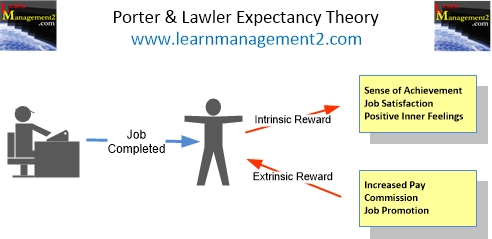Expectancy Theory
Porter & Lawler
Introduction
Porter and Lawler (Lyman W Porter and Edward E Lawler) used Victor Vroom’s Expectancy Theory as a foundation to develop their expectancy model. Similar to Vroom’s theory Porter and Lawler concluded that an individual’s motivation to complete a task is affected by the reward they expect to receive for completing the task. However Porter and Lawler introduced additional aspects to the expectancy theory as they felt that Vroom's theory was too simple.
The diagram below illustrates the two types of motivation rewards under Porter & Lawler's Expectancy Theory

Intrinsic And Extrinsic Rewards
Porter and Lawler categorised the reward as intrinsic and extrinsic
- Intrinsic rewards are the positive feelings that the individual experiences from completing the task e.g. satisfaction, sense of achievement.
- Extrinsic rewards are rewards emanating from outside the individual such as bonus, commission and pay increases.
Porter and Lawler's Expectancy Theory Model suggested that an individual's view regarding the attractiveness and fairness of the rewards will affect motivation.